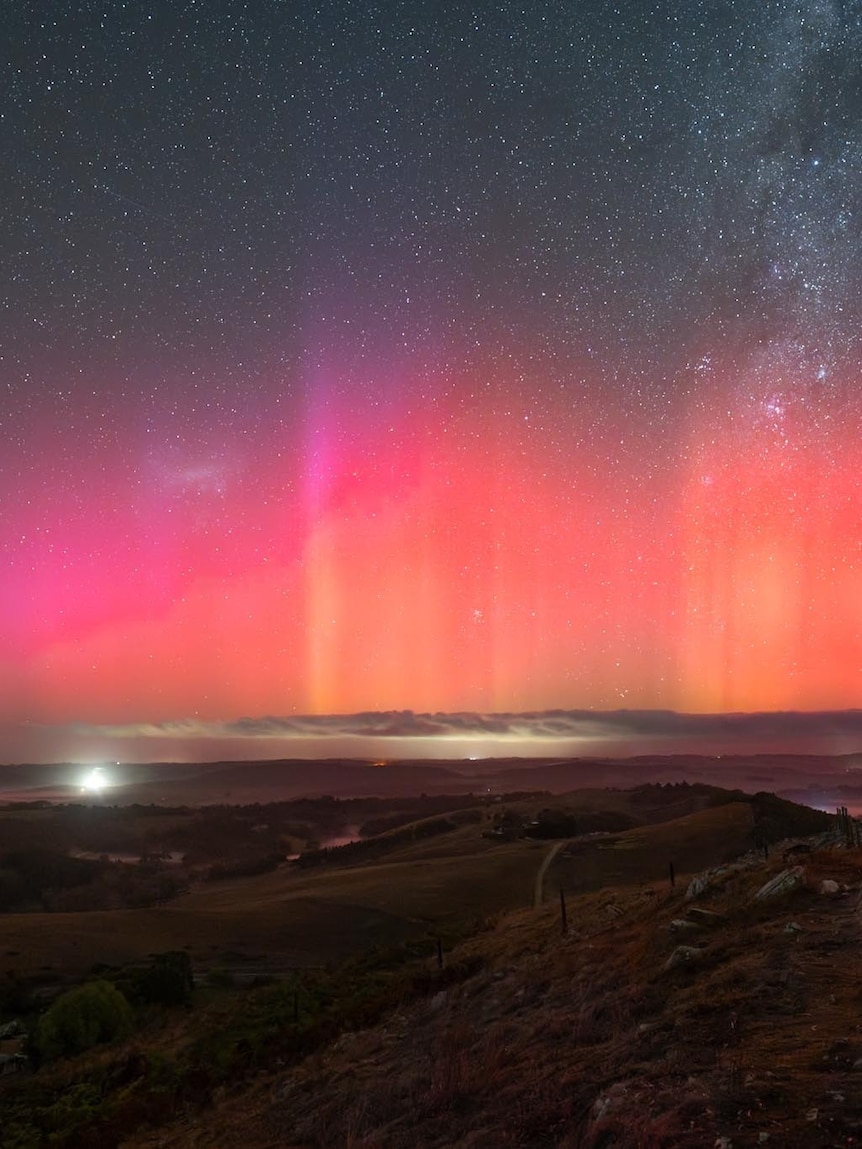Stargazers were treated to a light show as the Aurora Australis revealed itself across South Australia and Tasmania skies in the early hours of Saturday.
Adelaide photographer Simon Deluca-Cardillo spent almost four hours in the cold overnight near Kuitpo Forest in the southern Adelaide Hills.
His patience paid off when the clouds cleared.
“I had to wait for the moon to set at 3am,” Mr Deluca-Cardillo said.
“It started off slowly once the moon disappeared below the horizon at 3am — then about 4:30am it went off with a bang.”
Mr Deluca-Cardillo said the lights went “berserk”, and could be seen with the naked eye.
His long exposure shot, which captured more colours than his timelapse video, has been shared widely on social media.
A Bureau of Meteorology (BOM) spokesperson said it issued an aurora alert notice “due to the solar wind conditions looking favourable for auroras” in the early hours of Saturday.
“The event has mostly subsided by now, but it is likely that there may have been some visible aurora sightings in SA, NSW, Vic and Tas,” they said.
“In Australia, auroras are most commonly observed in Tasmania and southern Victoria. During larger events, there have been aurora sightings further north into New South Wales or South Australia.”
In Tasmania, sightings of the southern lights were reported across the state, with many posting their photos online.
Jules Witek shared his stunning images of “one of the brightest auroras I’ve seen in a good while” taken at Saltwater River in south-west Tasmania around 5am local time.
“Magnificent colours and beams easily seen with the naked eye and I was frothing with excitement,” Mr Witek said.
Auroras are triggered by solar flares that emit charged particles which then interact with Earth’s magnetic field and collide with atoms in the atmosphere, the BOM explained.
The phenomenon is set to become stronger and more frequent ahead of the solar maximum in July 2025.
Generally, the more sunspot activity there is, the higher the chances of an aurora occurring.
Posted , updated




